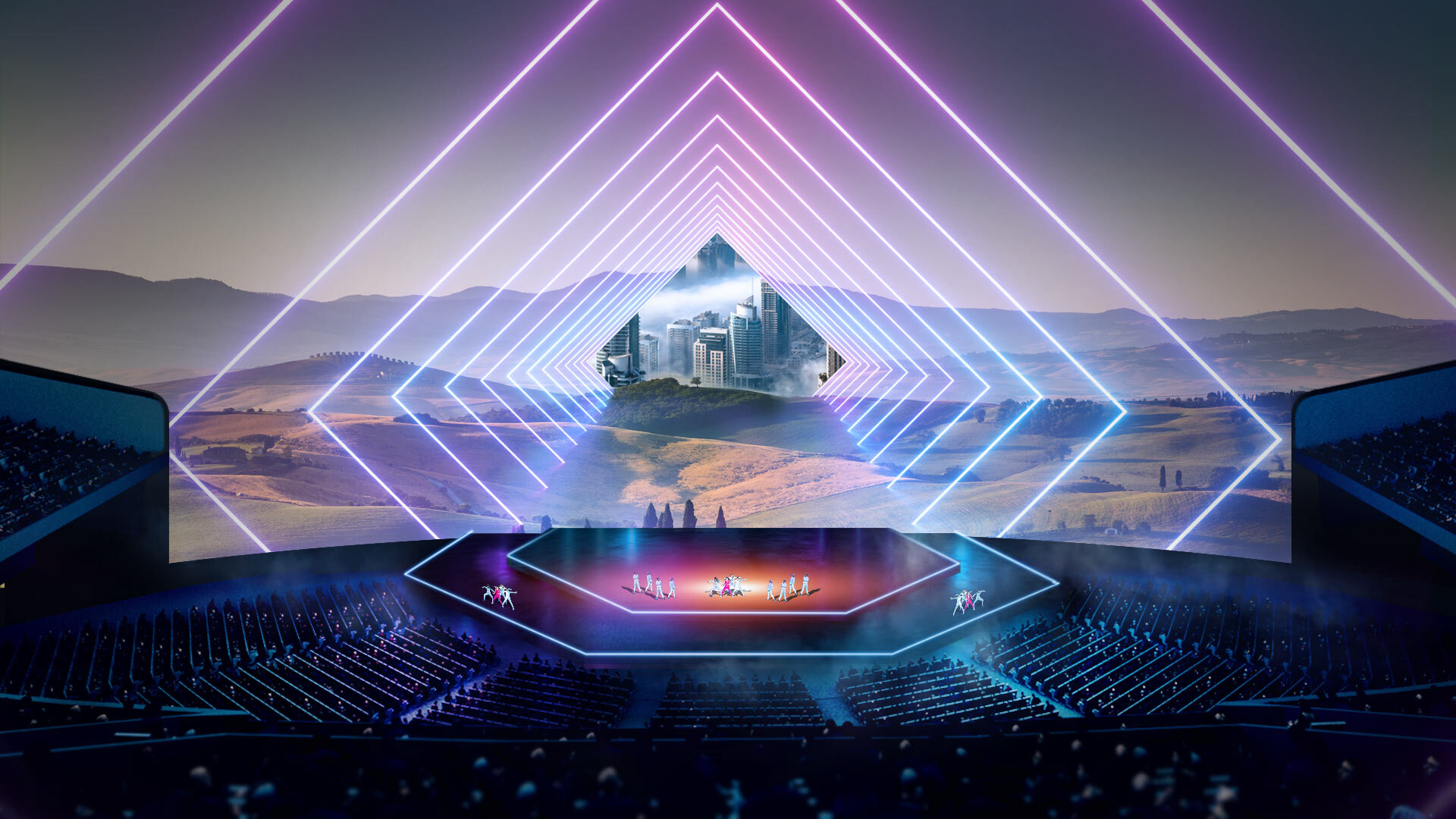
MSG SPHERE
Show Experience Design
Imagining the ultimate spectacle is fun.
Madison Square Garden (MSG) has a storied history of serving as an extraordinary conduit between spectacle and audience— an undeniably important vessel of both art and sport in the modern era. In its next chapter, MSG looks to further enhance the magic of the show with its new venue currently in development: the Sphere.
During my work on Sphere, my projects ranged from quick individual concepts and mockups for immersive moments, to more longterm show development projects that considered the full end-to-end user journey, including content creation and show design, as well as how experience carries over into the spaces outside the theater. One aspect of my role that I loved was the cross-functionality— allowing me to participate in high level design thinking, while also getting my hands dirty in both the technical nitty-gritty as well as the art direction and concept visualization process. We’ll take a quick look at the range of my work on show development below.
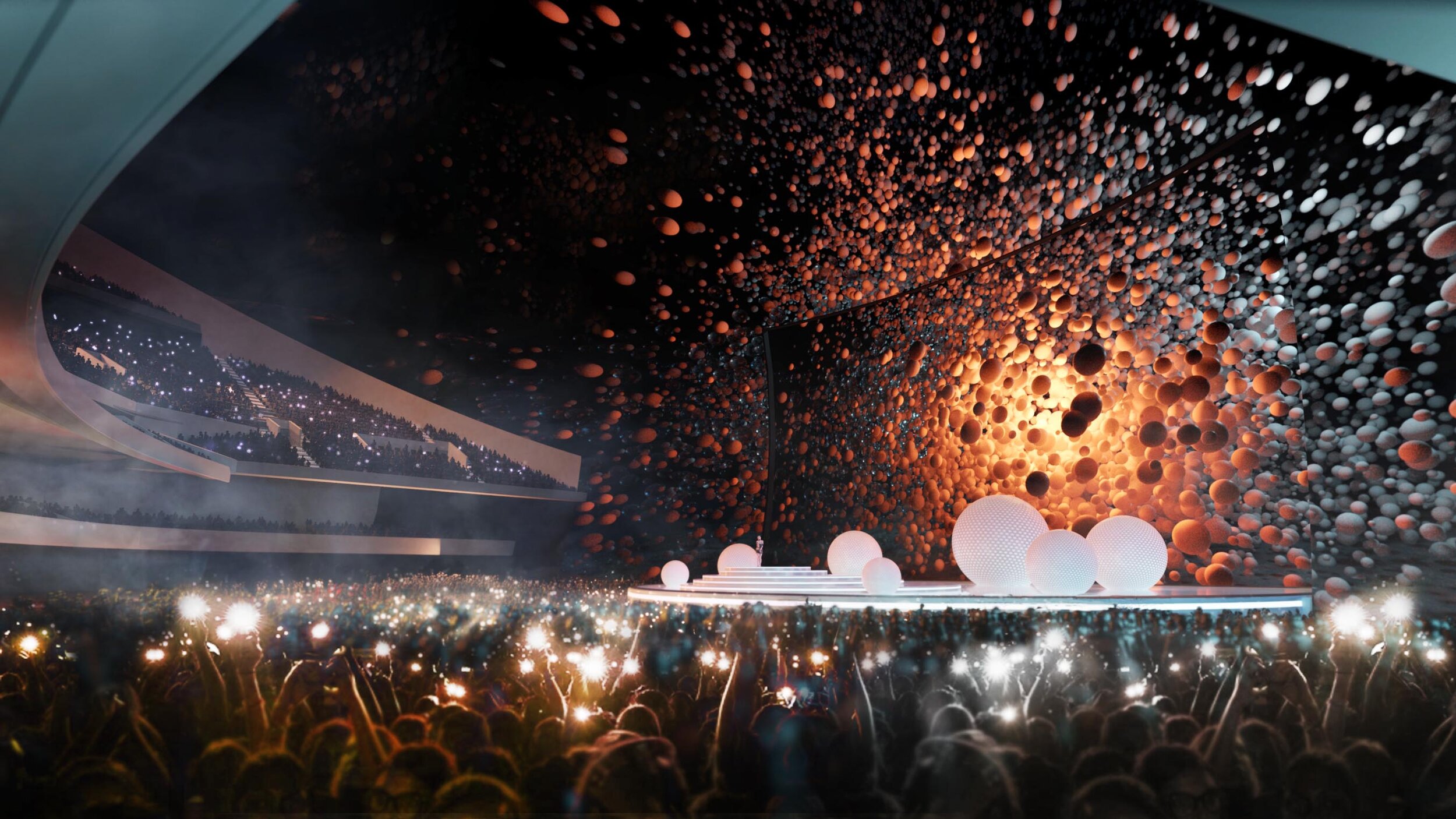
I created these concept renders when tasked to visualize a “generic” concert for a pop singer at Sphere. This render involved designing and creating a number of features: a stage design, populating the stage with choreographed performers, creating spherical content to be displayed on the dome screen, filling the space with a lively crowd to convey the energy of the space, and simulating practical lighting, smoke, and projection effects. This concept also shows a potential solution for using picture-in-picture on the display in a way that seamlessly integrates into the background content.
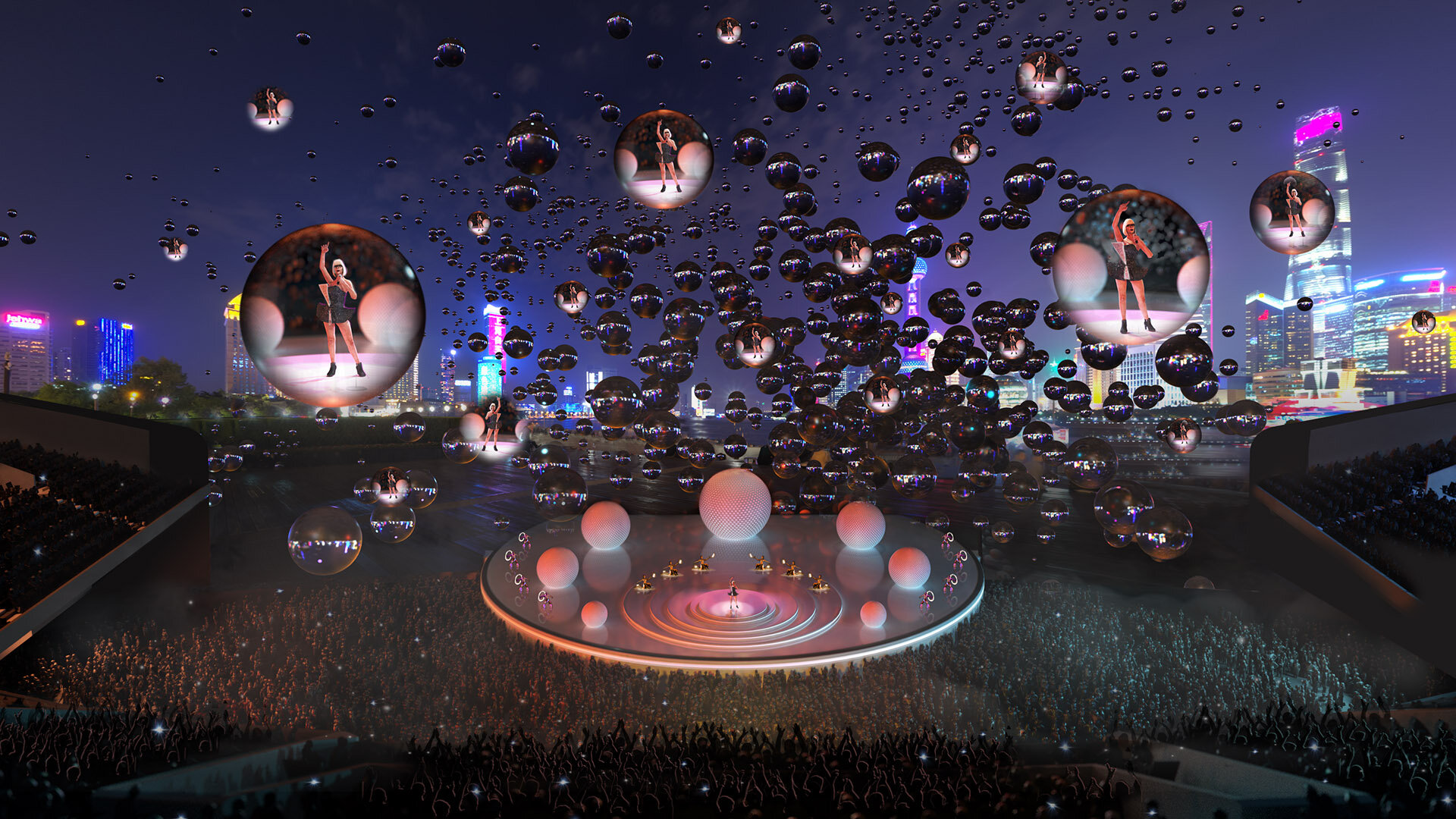
I created the following mockup for a hypothetical conference event, this one depicting some sort of futuristic high speed rail. From a practical perspective, I wanted to consider how to allow for rapid camera motion without getting the audience sick— having a ‘framing’ structure in the foreground creates a sense of stability for the viewer while the scene can move quickly viewed through the windows.
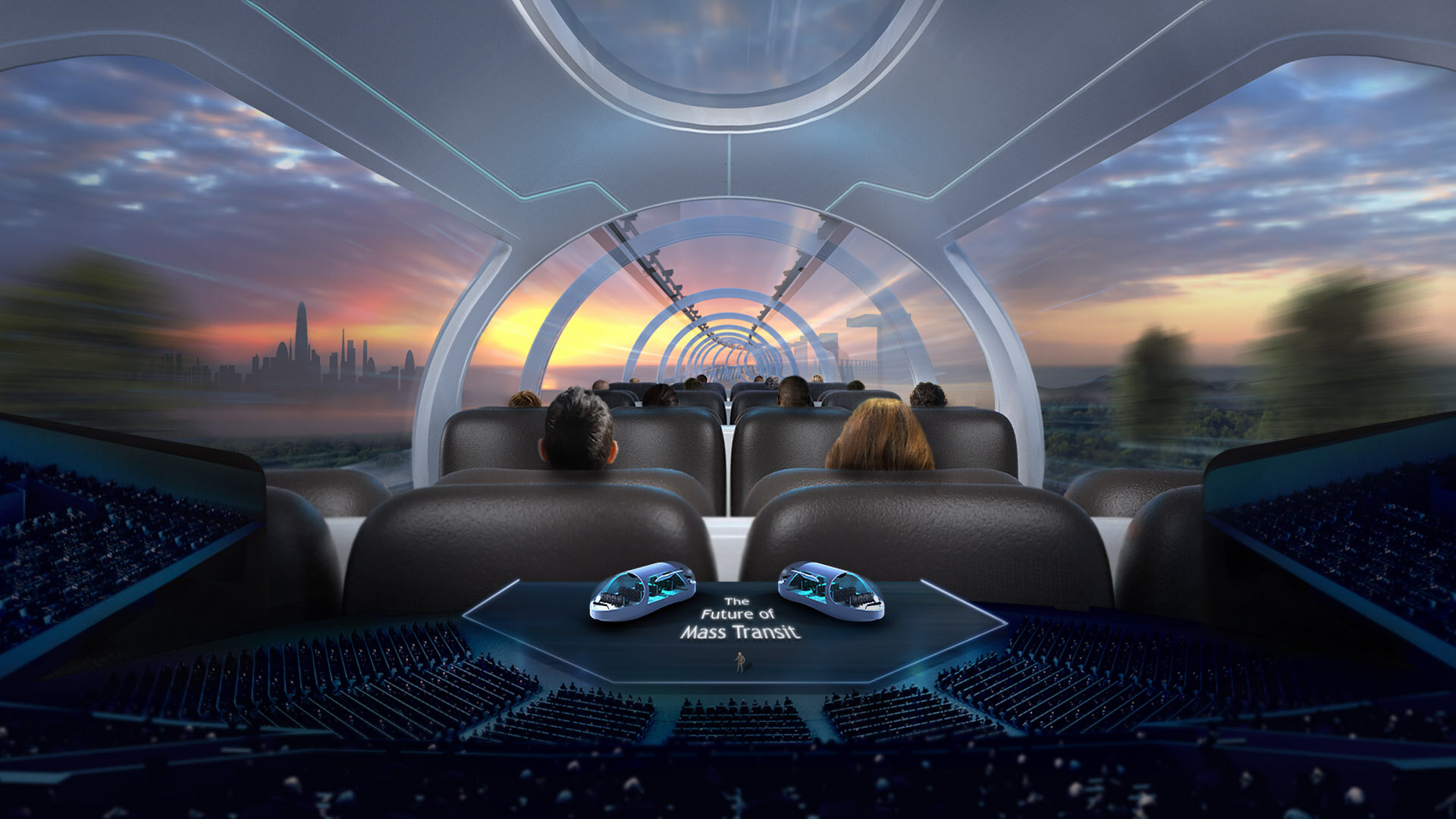
Creating quick low-fidelity mockups for ideation, and high-fidelity renders for visualization
Sketch Storyboard
Rendered visualization of a scene inside the venue
In addition to concepts in which I would create original content to be displayed on-screen, I also would sometimes be asked to visualize shows for well-known acts or existing entertainment properties. This process involved retrofitting and collaging pre-existing assets into the content on the display, while creating a venue environment that would match the mood. These design concepts explored the potential uses of different venue technologes (practical lighting and projection effects, smoke machines, etc.), showing ways to extend the experience beyond the screen. Below is a selection of images that I created with a combination of pre-existing media and bespoke assets.
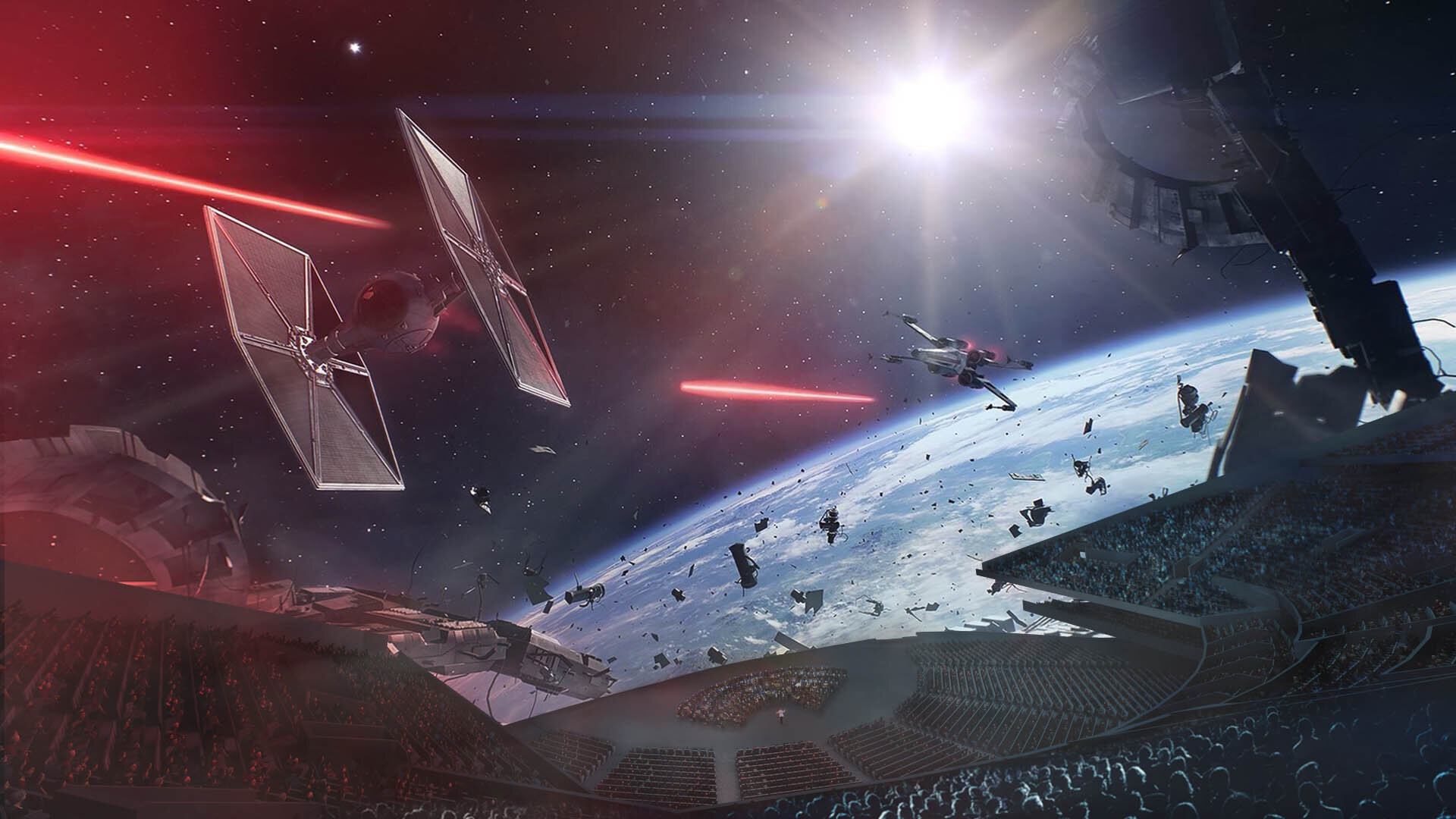
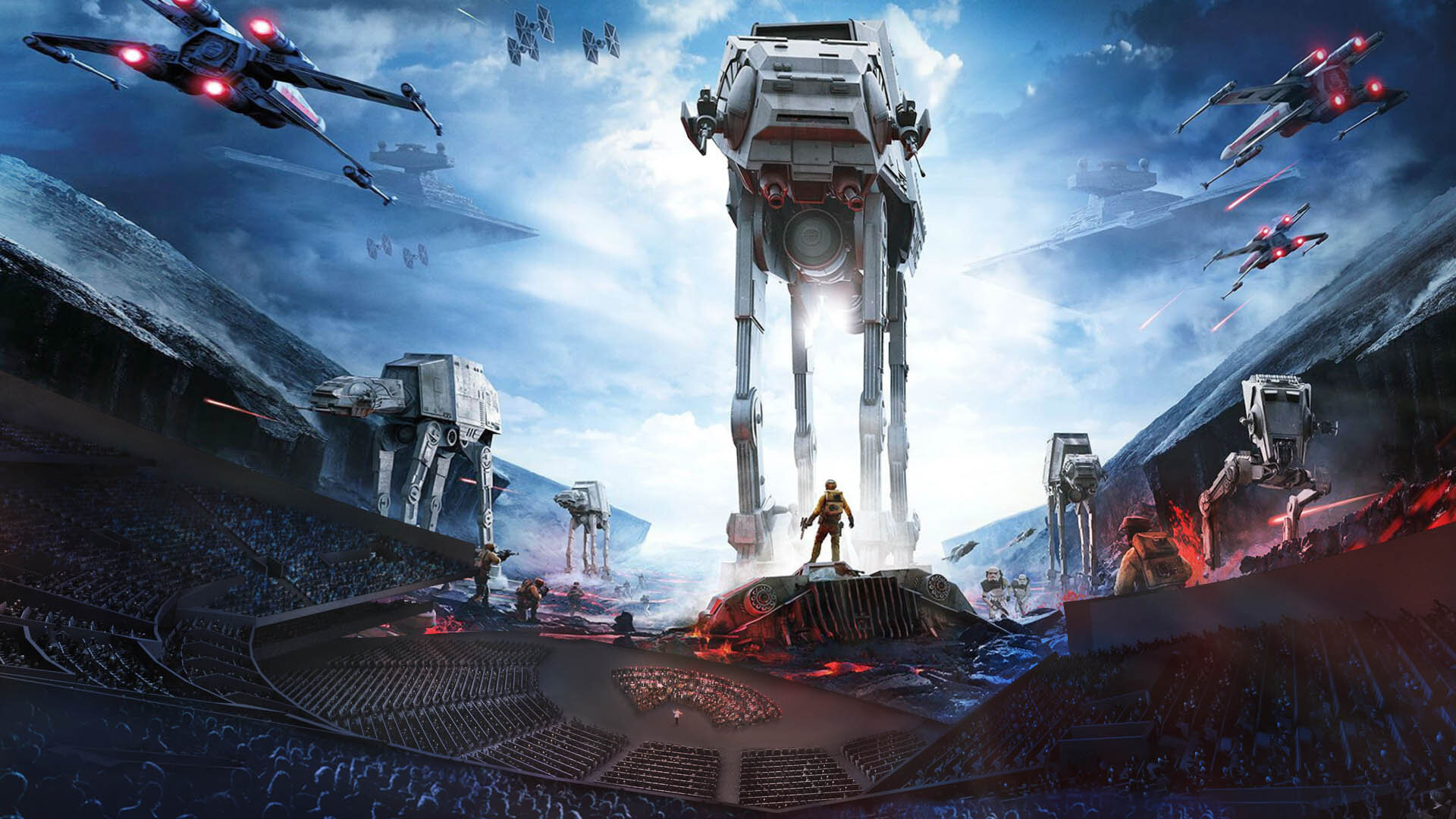
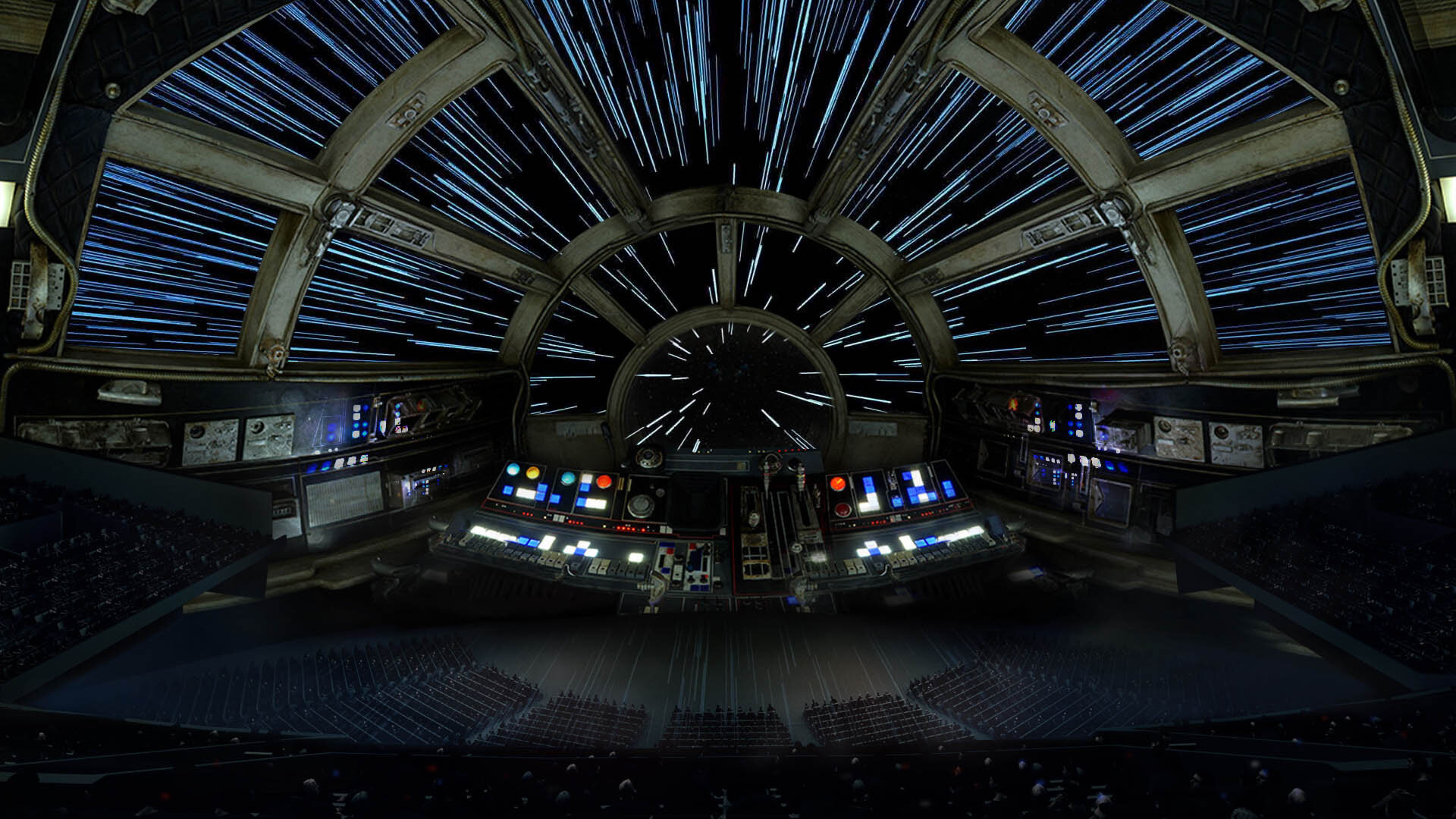
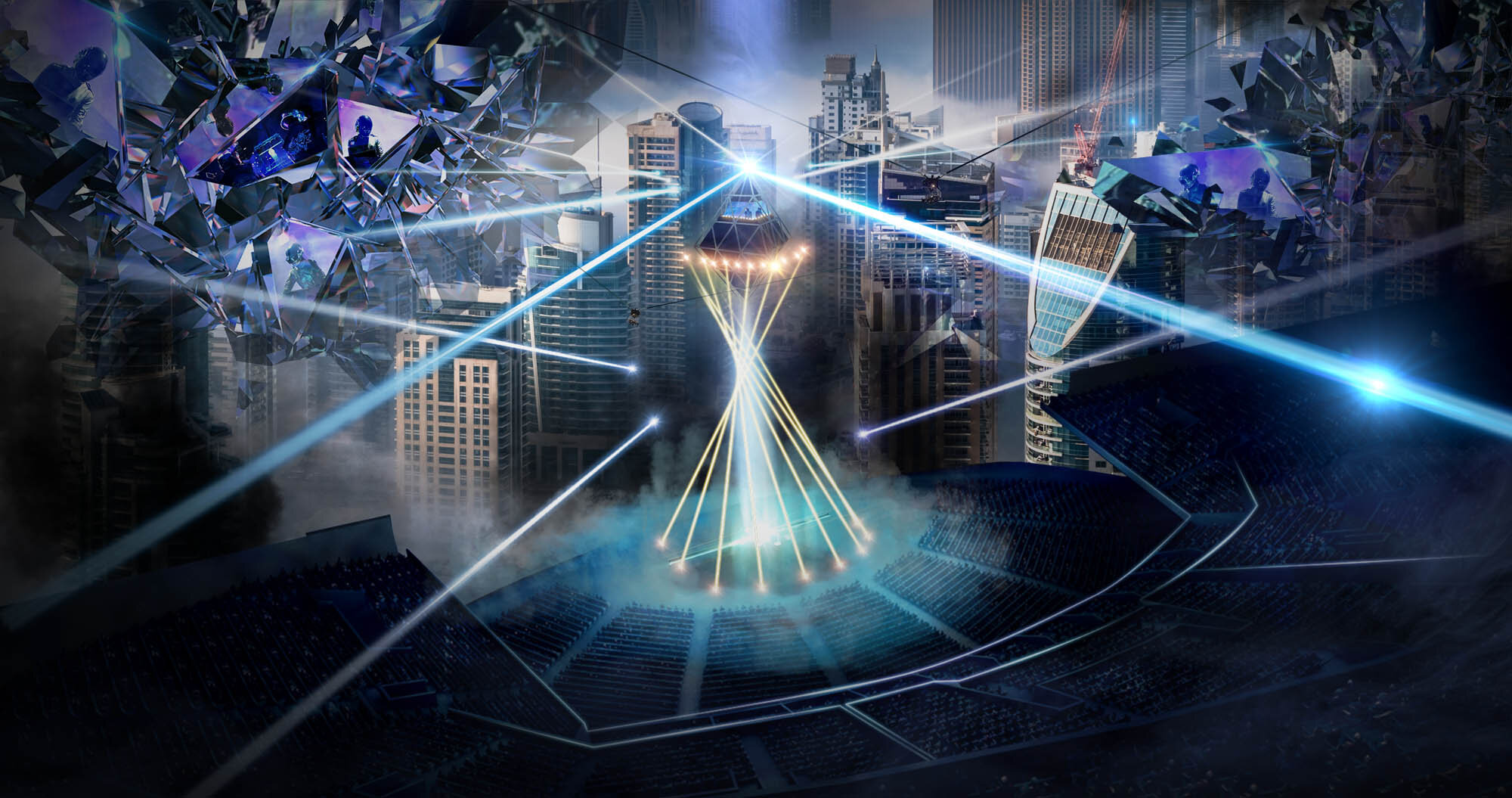
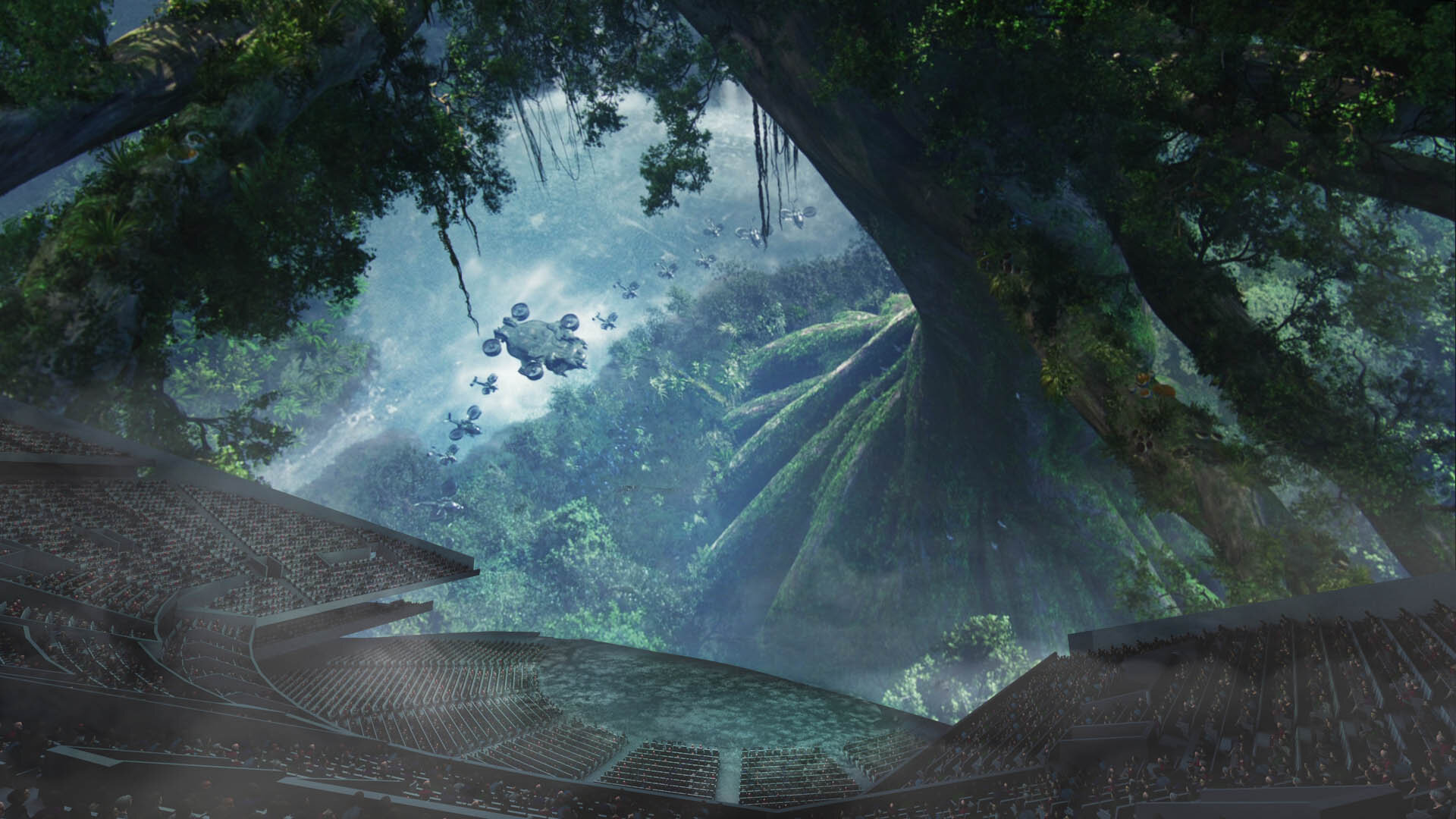
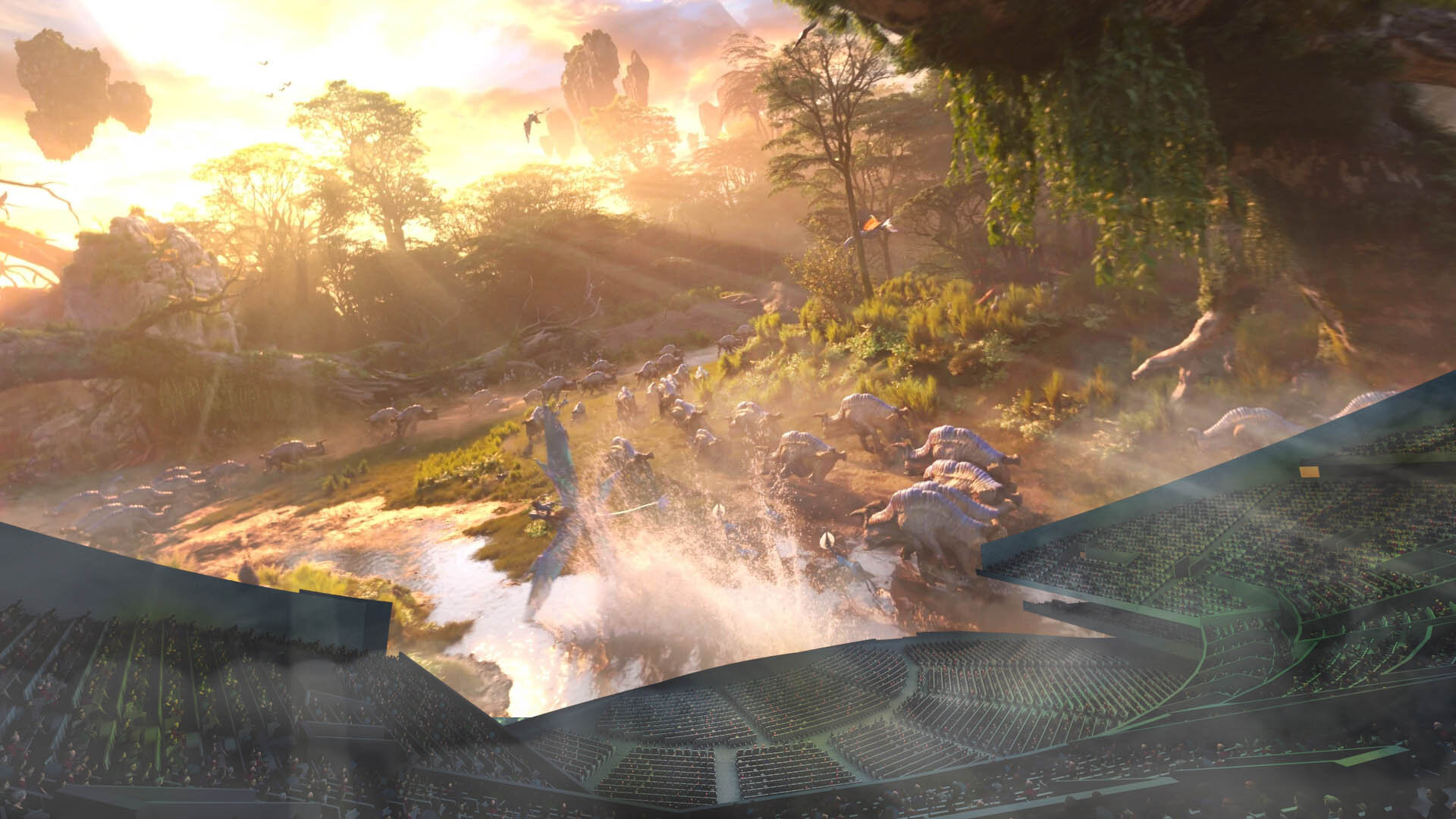
Imagining the venue from a performer’s perspective.
Full Length Show Development

Our studio was tasked with developing show concepts, considering every part of the experience, from promotional materials, to guests’ arrival at the venue, to the mindblowing moments of the show, to the take-home items to remember the experience.
Our team was paired up with the director Louie Schwartzberg and an accomplished writing team (who had actually worked on the Lion King). As we collaboratively developed the story, I contributed my knowledge of the venue and my experience developing spherical content, in an effort to augment the feedback cycle between cultivating the 'wow' moments and creating the compelling story that they work to enhance. In addition to providing high level design and creative direction, I also created concept art for the story, renders to visualize the show in the venue, and designed and modeled practical stage elements and lighting.

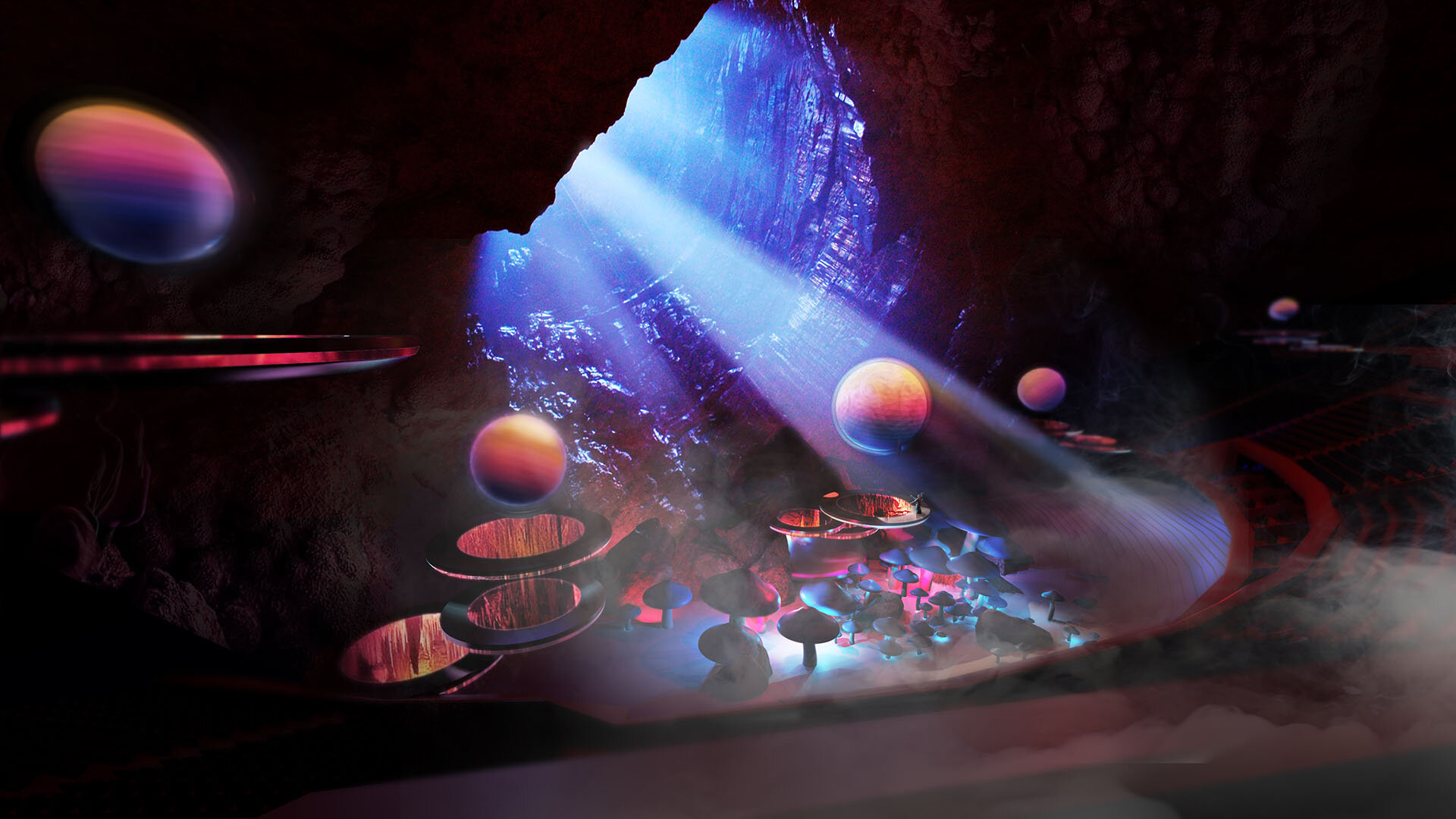
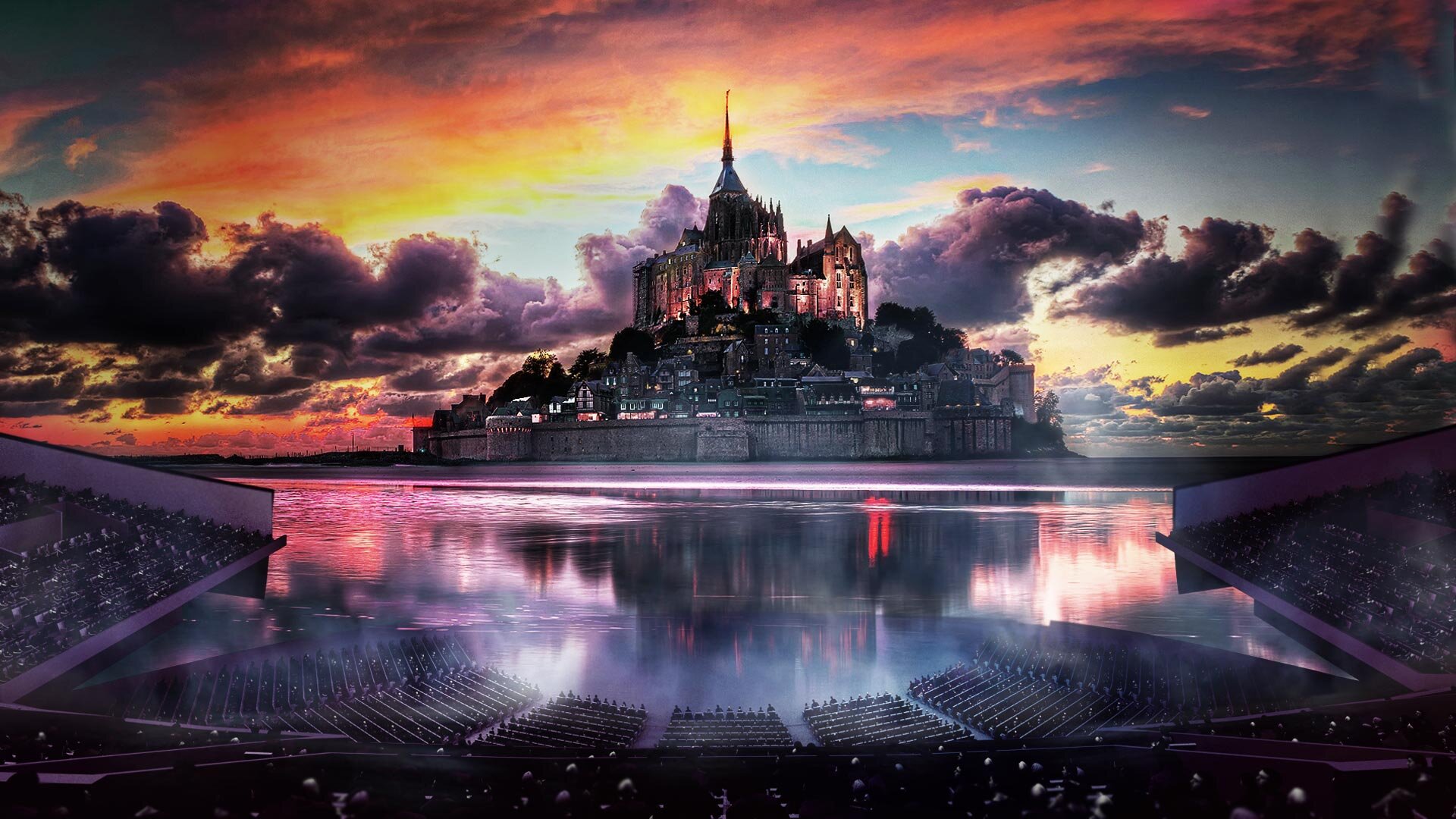
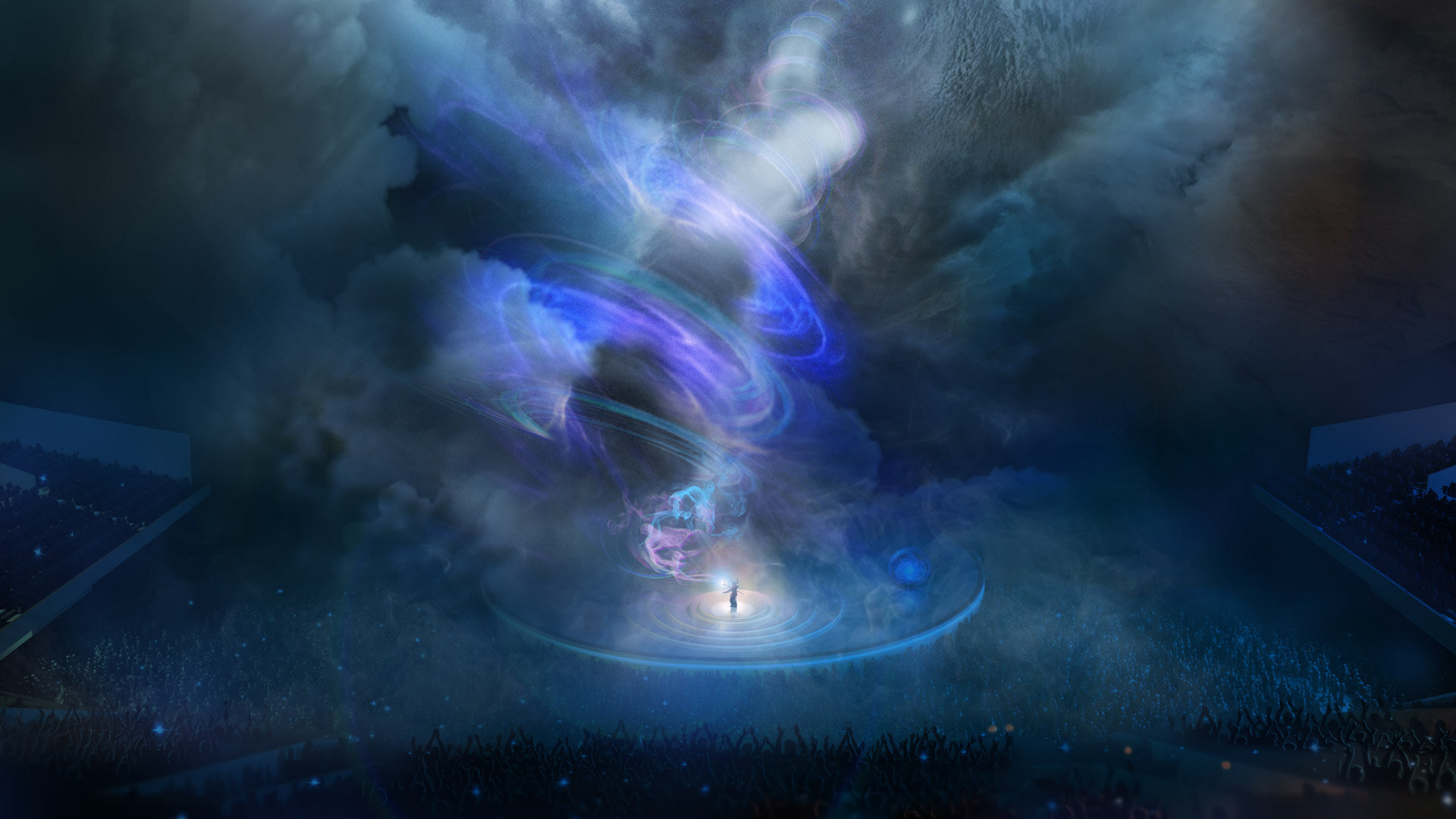
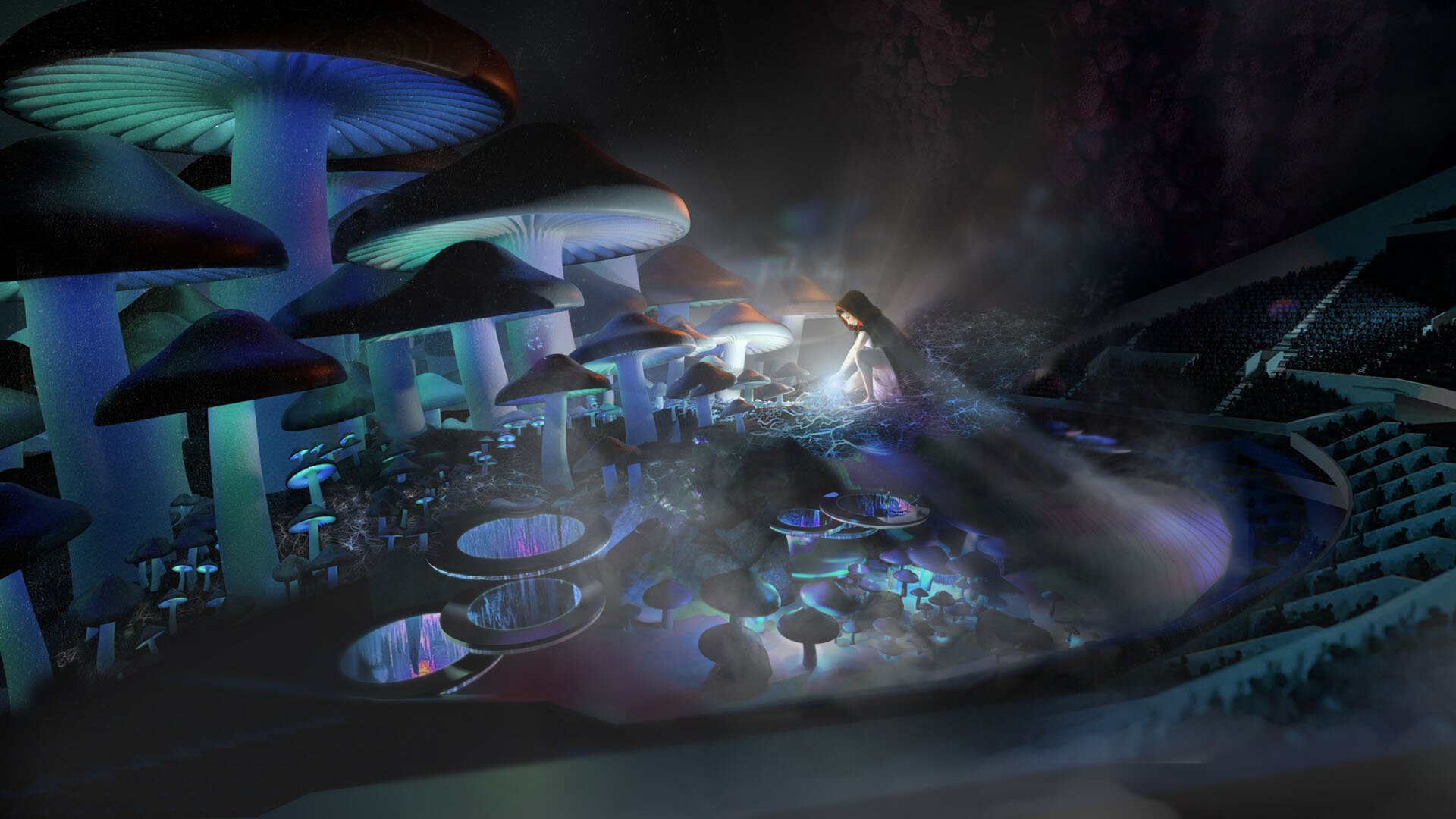
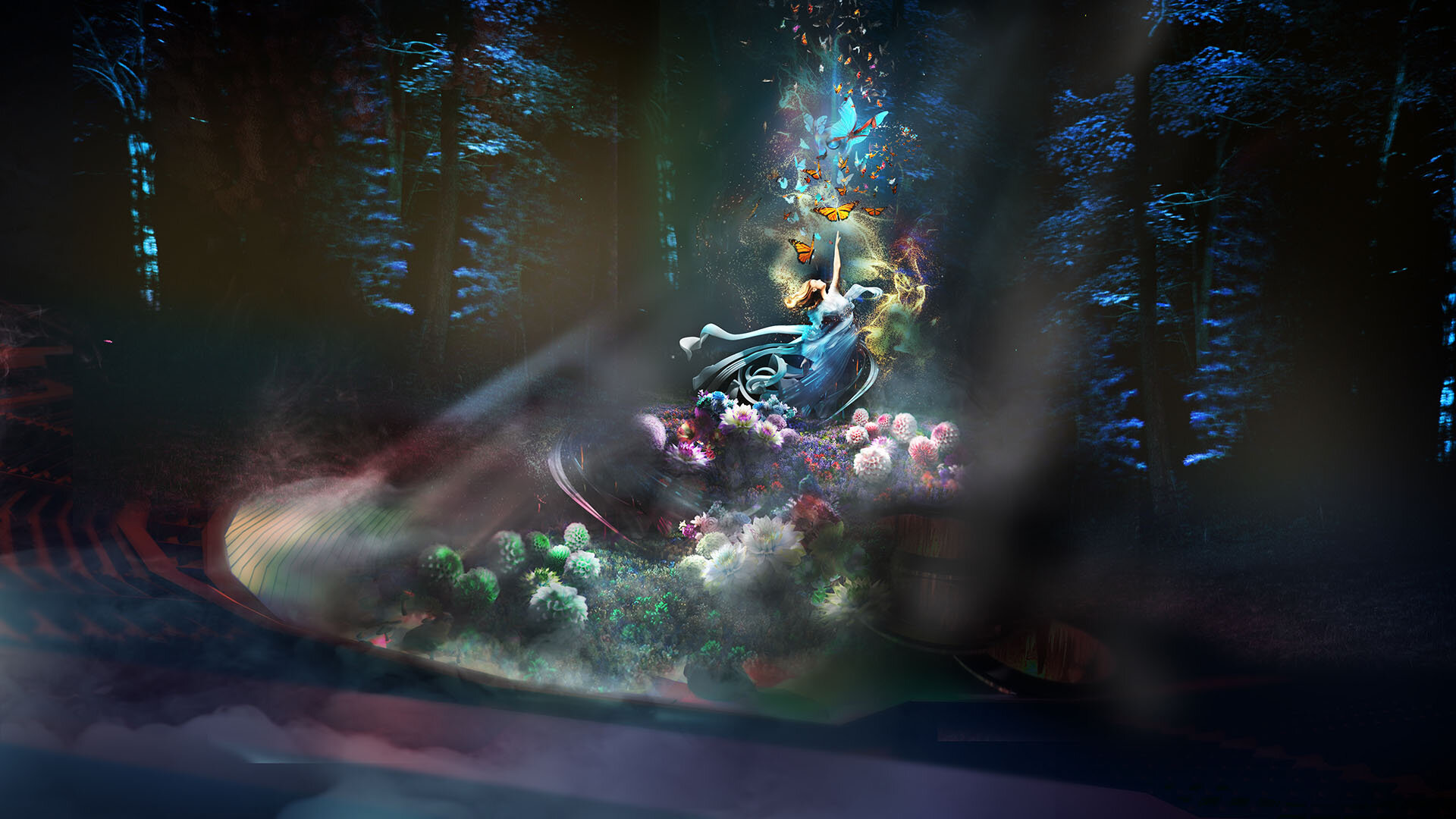
Imagining Immersive Techniques
A core directive behind the development of the show was to exhibit and emphasize what makes the Sphere such a singularly impressive venue by activating all its high-tech capabilities.
I brainstormed a ton of ideas for immersive techniques suited to different points within the story, so as to elevate awe inspiring moments. These immersive techniques were contextualized with specific ways activate the venue technology synergistically. For each act of the show, I isolated a set of three immersive techniques, described the experience of the moment in the show, and explained how to create the effect using the capabilities of the venue. Two sets of these immersive techniques are shown here.






